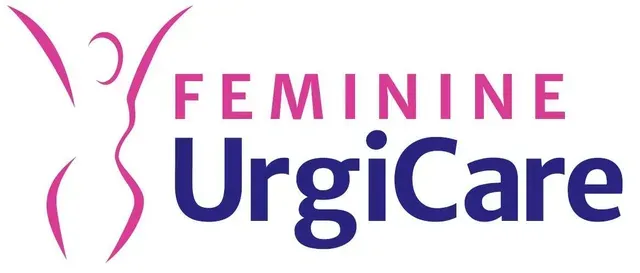In today’s interconnected world, student neighborhoods play a critical role fit academic and personal experiences.

These areas are not simply collections of individuals yet are dynamic communities that cultivate development, finding out, and cooperation amongst pupils. They differ extensively in kind and feature, from campus-based groups to global on the internet discussion forums, each offering distinct possibilities for engagement and growth.
Whether you are tipping onto an university campus for the very first time or participating in online learning atmospheres, understanding the structure and benefits of trainee areas can greatly improve your educational trip. This write-up looks into the essence of student communities, discovering exactly how they operate, the advantages they give, and the ways in which they can be leveraged for personal and academic success.
Understanding Student Areas
Trainee areas are fundamental to the academic experience, serving as both social and educational support systems. At their core, these areas are groups developed naturally by trainees who share typical rate of interests, objectives, or fields of study. They can be informal, such as study hall, or official, like student unions and clubs.
These neighborhoods are identified by a common identification and the collective quest of expertise, abilities, and experiences. They function as platforms for students to connect, team up, and contribute to each other’s growth, expanding past scholastic boundaries to influence individual advancement and neighborhood involvement.
In essence, trainee areas are microcosms of bigger societal frameworks, where leadership abilities are honed, ideas are traded, and lifelong relationships are developed. The communications within these communities mirror a varied mix of cultural, intellectual, and social characteristics.
- Networking Opportunities: Student communities supply a network of peers and coaches who can offer assistance and support.
- Ability Development: Participating in community tasks assists students create necessary abilities such as interaction, management, and synergy.
- Resource Access: These neighborhoods commonly give for students accessibility to scholastic resources, including study products and professional guidance.
- Social Involvement: They provide a platform for social interaction, easing the shift right into new academic environments and helping to combat isolation.
Through these different functions, student areas become important to the all natural growth of pupils, laying a foundation for future expert and personal success.
The Benefits of Engaging in Student Neighborhoods
The benefits of taking part in pupil neighborhoods are diverse, influencing both academic and personal balls.

On an academic degree, these areas encourage collaborative discovering, permitting pupils to benefit from diverse viewpoints and proficiency. Sharing expertise and sources within a neighborhood can lead to a lot more efficient discovering end results and enhanced scholastic performance.
In addition, student neighborhoods provide a system for individual development and self-discovery. By involving with peers from various backgrounds and techniques, students gain a broader worldview, improving their social competence and compassion. This exposure to varied point of views is vital in creating important thinking and analytic skills.
Additionally, energetic involvement in area tasks can enhance trainees’ self-confidence and self-esteem. Handling leadership duties or joining discussions and events fosters a feeling of accomplishment and belonging, which is important for general health and inspiration.
Kinds Of Trainee Neighborhoods
Pupil neighborhoods come in different forms, each satisfying different interests and goals. These can be extensively categorized into scholastic, social, recreational, and expert communities, to name a few. Each type provides special systems and chances for pupil interaction.
- Academic Communities: These are commonly focused around certain fields of study or academic interests. Examples include study groups, honors societies, and departmental clubs.
- Cultural Neighborhoods: These teams concentrate on advertising social understanding and variety, often arranging events and activities to celebrate various practices.
- Leisure Communities: These consist of sporting activities teams, recreational clubs, and hobby-based teams that give a break from scholastic rigors and advertise physical and psychological wellness.
- Expert Neighborhoods: These are aimed at career advancement, offering networking opportunities, workshops, and mentorship programs to prepare trainees for the specialist globe.
By identifying and involving with the right areas, trainees can customize their college experiences to align with their interests and career ambitions, leading the way for a fulfilling scholastic trip.
Constructing a Thriving Pupil Area
Creating and preserving a thriving student neighborhood requires initiative and cooperation from both students and schools. It begins with fostering an inclusive atmosphere where all pupils feel invited and valued regardless of their backgrounds.
Institutions can support this by providing resources and facilities that urge interaction and engagement. This consists of producing physical areas like pupil unions and on-line platforms that promote communication and collaboration. Additionally, arranging events, workshops, and workshops can better boost engagement, offering students with possibilities to link and learn from each other.
Leadership and Trainee Participation
Effective management is vital in nurturing a successful trainee community. Leadership functions within these communities offer trainees a chance to establish and show their organizational and interpersonal abilities. Students who think these functions contribute significantly to establishing the tone and instructions of their neighborhoods, affecting their peers favorably.
Motivating leadership and energetic engagement among Sales volume and market share are the most popular measures of: 1) financial productivity. 2) market performance. 3) merchandise productivity. 4) consumer choice. 5) human resource allocation. pupils not only strengthens the community yet likewise equips individuals, preparing them for future challenges. By cultivating a society of partnership and support, pupil communities can flourish, leaving a long-term influence on their participants and the academic setting all at once.
